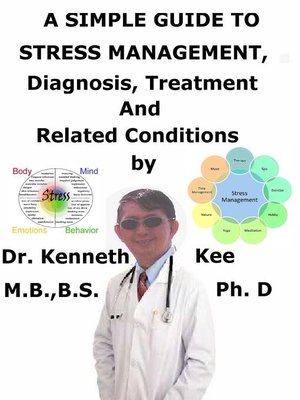
Sign up to save your library
With an OverDrive account, you can save your favorite libraries for at-a-glance information about availability. Find out more about OverDrive accounts.
Find this title in Libby, the library reading app by OverDrive.



Search for a digital library with this title
Title found at these libraries:
| Library Name | Distance |
|---|---|
| Loading... |
This book describes the Stress Management, Treatment and other Related Diseases
Stress is a part of the life every day.
It happens to you at work or at play
A little stress is good for the temperament.
It stimulates and provides excitement.
Too much stress for a long time can be harmful
The brain becomes faint and fearful
The heart beats become very fast
The breathing feels that it can not last
There is hand trembling and shaking;
There is also a sense of doom and dying
Stress is a highly treatable condition
Always think before making decision
Manage the time well and carefully
Always do work to the best of the ability
Learn to relax and how to meditate
Enjoy the life and get enough sleep
-An original poem by Kenneth Kee
Stress Management is a group of programs meant to assist people deal more effectively with stress in their lives by:
1. Analyzing the specific stress factors and
2. Taking positive actions to diminish their effects
Popular programs of stress management are meditation, psychotherapy, yoga, and exercise.
It is unrealistic to eliminate stress completely.
Stress is an unavoidable human response that people all experience from time to time
It is not totally bad either.
People can all benefit from identifying their stress and managing it better.
Stress is a very frequent disorder featured by exaggerated worry and tension.
People with stress are likely to worry excessively about money, health, family or work even though there are no signs of trouble.
They cannot calm down and may be not able to sleep readily.
Repetitive exposure of the stress reaction on people is proven to lead to long-lasting psychological and physical health disorders such as cardiovascular disease, diabetes, anxiety and depression.
Stress has also been useful.
Stress acted as a protective mechanism that warned people of danger.
It is a natural reaction that told people when to run.
This reaction is now called the "fight or flight" response, or the "stress response."
Stress is a normal component of daily life.
It happens to everybody daily as people deal with with ordinary events, interact with people and meet all kinds of demands.
A little stress is good.
It makes the person think and try harder.
It stimulates and provides excitement.
A moderate amount of stress gets the person excited about life, motivates the person and improves the performance.
It is when stress is too intense or continues for a prolonged period of time that it can become harmful and may have negative effects.
Situations that cause stress are called stressors and people feel a wide range of stressors every day.
These may be common stressors:
a. Meeting deadlines,
b. Organizing a busy day
c. Caring for a family member
Some main causes of stress are:
1. Work,
2. Finances,
3. Relationships,
4. Parenting
5. Day-to-day inconveniences.
Stress can activate the body's response to a perceived threat or danger, called the fight-or-flight response.
Stress management starts with identifying the causes of stress in the life.
A stress journal can help the person identifies the regular stressors in the life and the way the person deals with them.
Ways to manage stress are:
1.Time management
2.Mindfulness meditation and physical relaxation
3.Laugh therapy
4.Positive Affirmations and imagery
5.Cognitive Restructuring
6.Music Therapy
7.Exercise
8.Hobby
9.Acceptance-Orientated...







